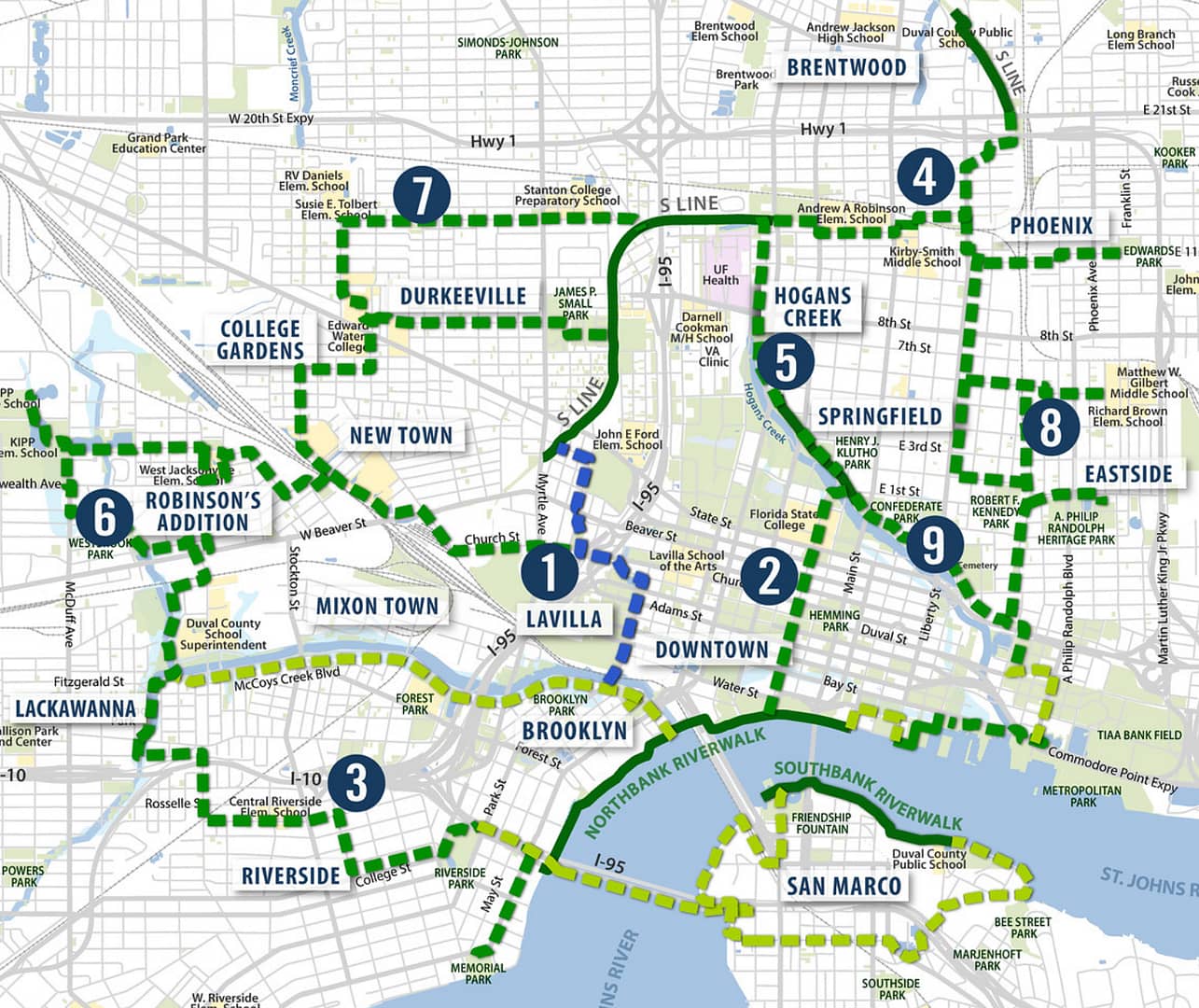
The Ever-changing Landscape of Jacksonville’s Urban Core
First Redlined as an “unrestricted zone”, then the Eisenhower Act, next Consolidation, and then the War on Drugs; after decades of decline of what used to be the Harlem of the South, residents and tourist can look forward to a permanent change with or without “Withinfrication”. The Emerald Trail will eventually link 16 schools, two colleges and 21 parks among other destinations like restaurants, retail and businesses, with an additional 13 schools and 17 parks located within three blocks of the trail. She got her facelift in May 2021 when City Council allocated $132 million to the project as part of the Local Option Gas Tax. Construction of Phase 1 of the McCoys Creek segment began in June, while the LaVilla Link, connecting LaVilla to Brooklyn and the S-Line Rail Trail, broke ground in September. In December 2021, Groundwork revealed designs for the next phase, which will transform Hogan Street in the Downtown Northbank from the Riverwalk north to Springfield’s Klutho Park. Construction is expected to begin in fall of 2022. (excerpt from JaxToday.org)
The population of the 30-square-mile old city of Jacksonville peaked at 204,275 residents in 1950, according to that year’s census, while Duval County’s total population was 304,029. Thereafter, the Urban Core entered a period of precipitous decline due to factors including the redlining of mostly Black urban neighborhoods, the demolition and fragmentation of neighborhoods for highways, and other discriminatory policies of the Jim Crow era. By 2010, Duval County’s population had reached 864,263, but the Urban Core’s population had shrunk to only 104,047, a loss of more than 100,000 people.
Where do we go from here? According to Jax Today, from 2010 to 2020, the Eastside’s population dropped slightly by 52, and the proportion of the neighborhood that is African-American dropped more than seven points to 80.6%. Meanwhile the White and Hispanic populations grew by 18% and 122% respectively. These numbers suggest the Eastside is beginning to see the type of displacement that has occurred in similar neighborhoods affected by the same forces.
BCN – Mobile Global Media




